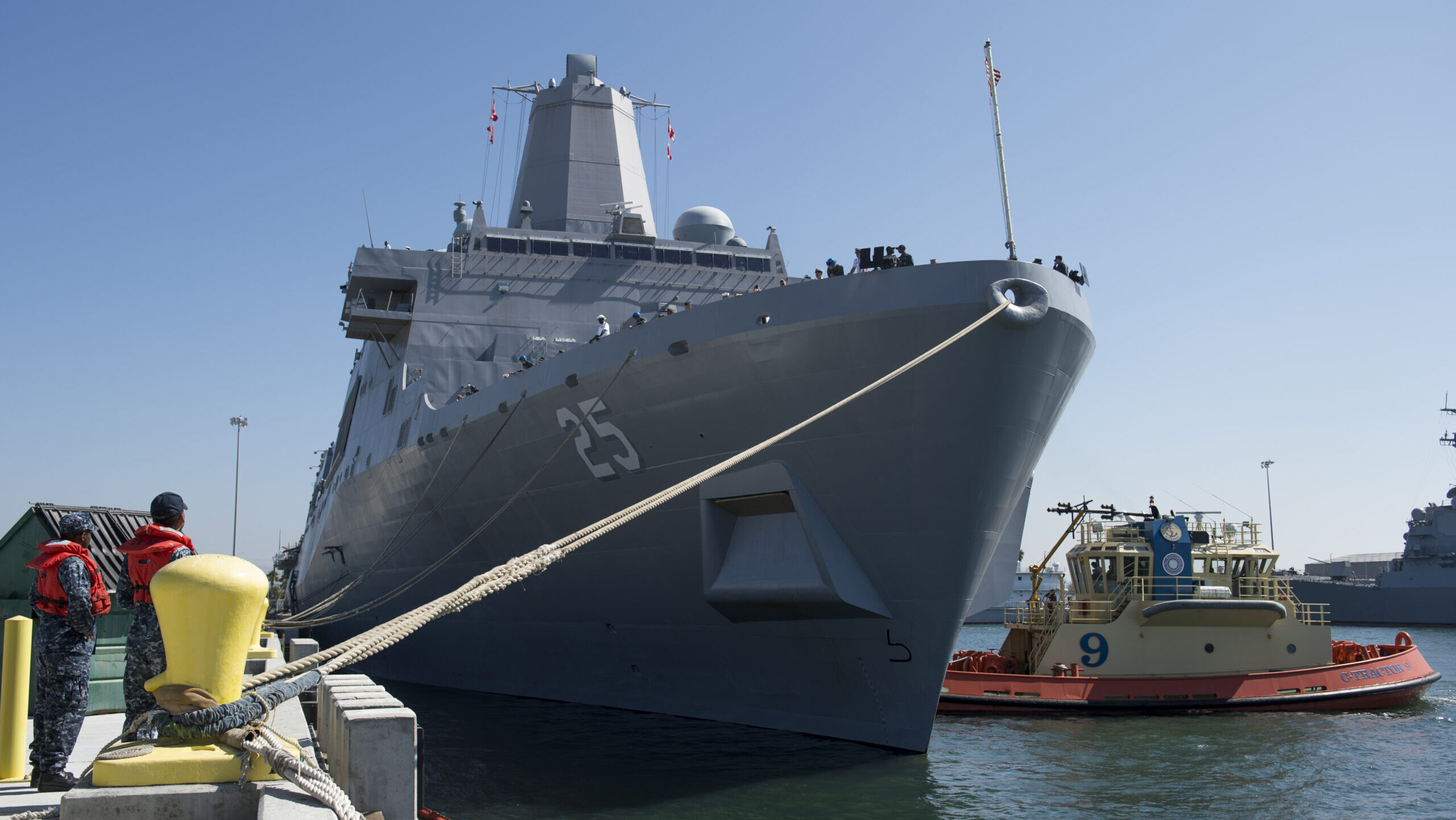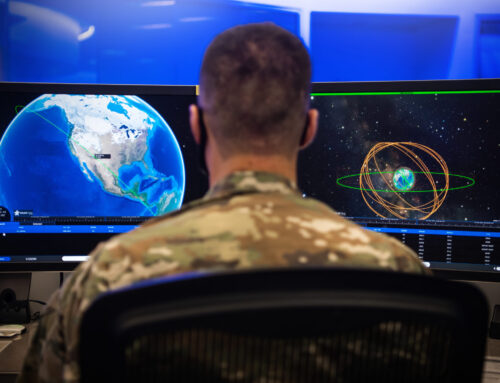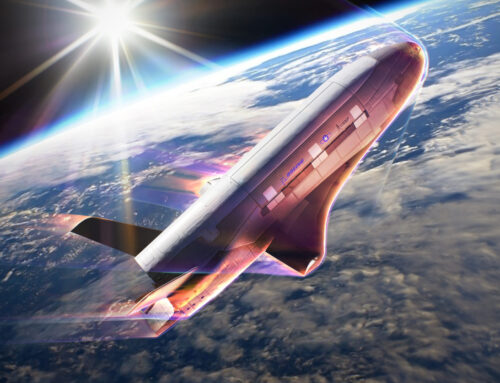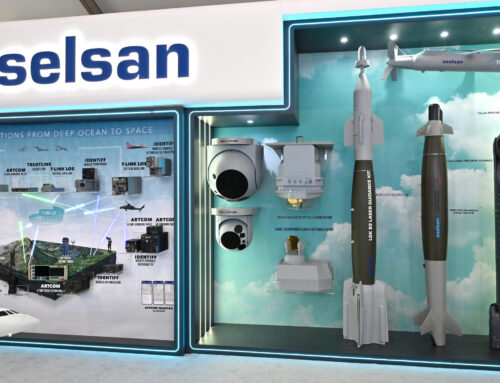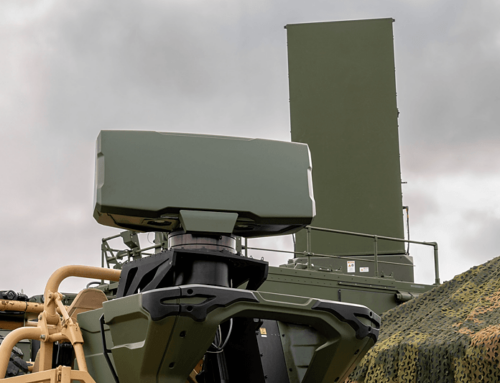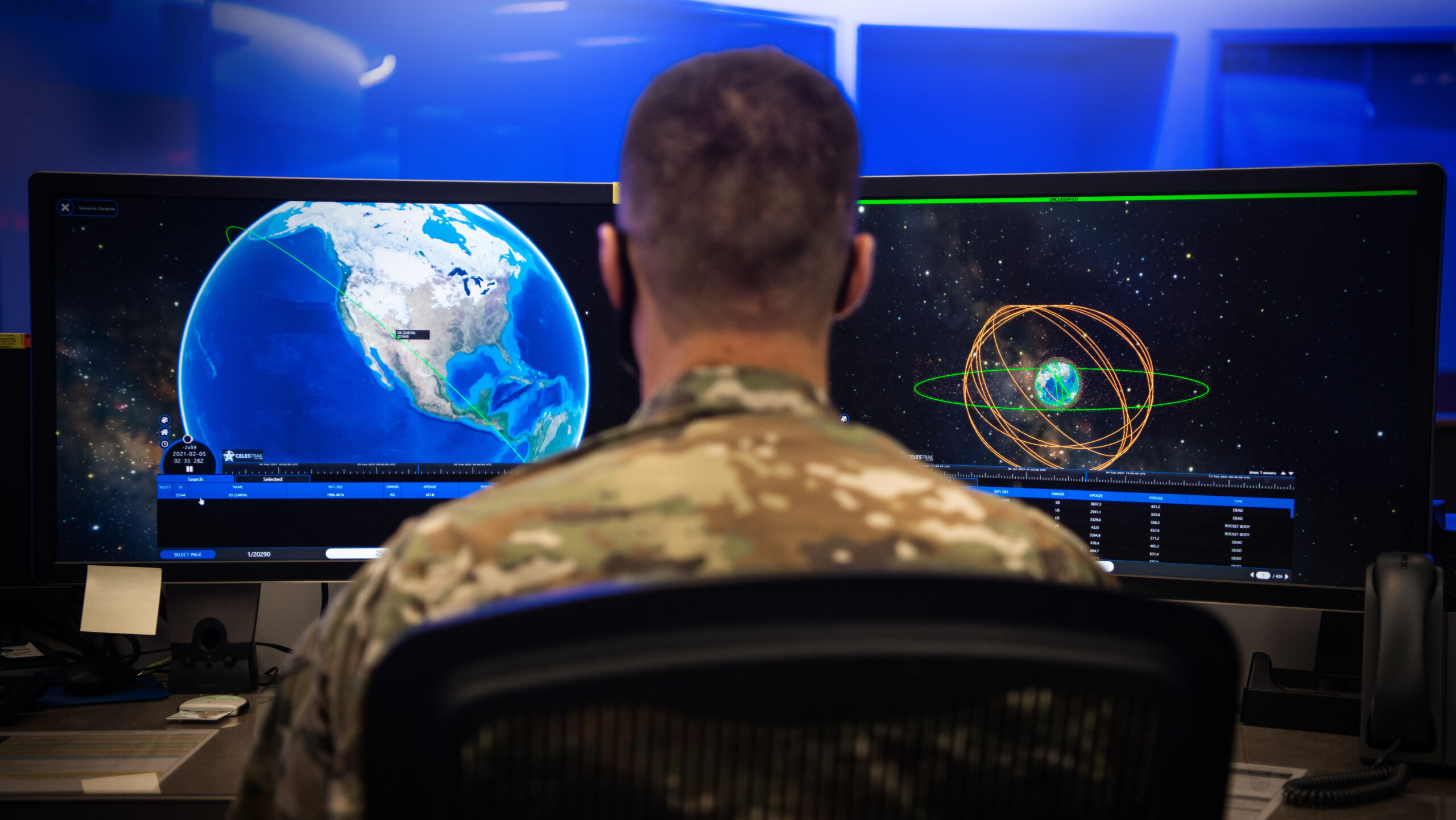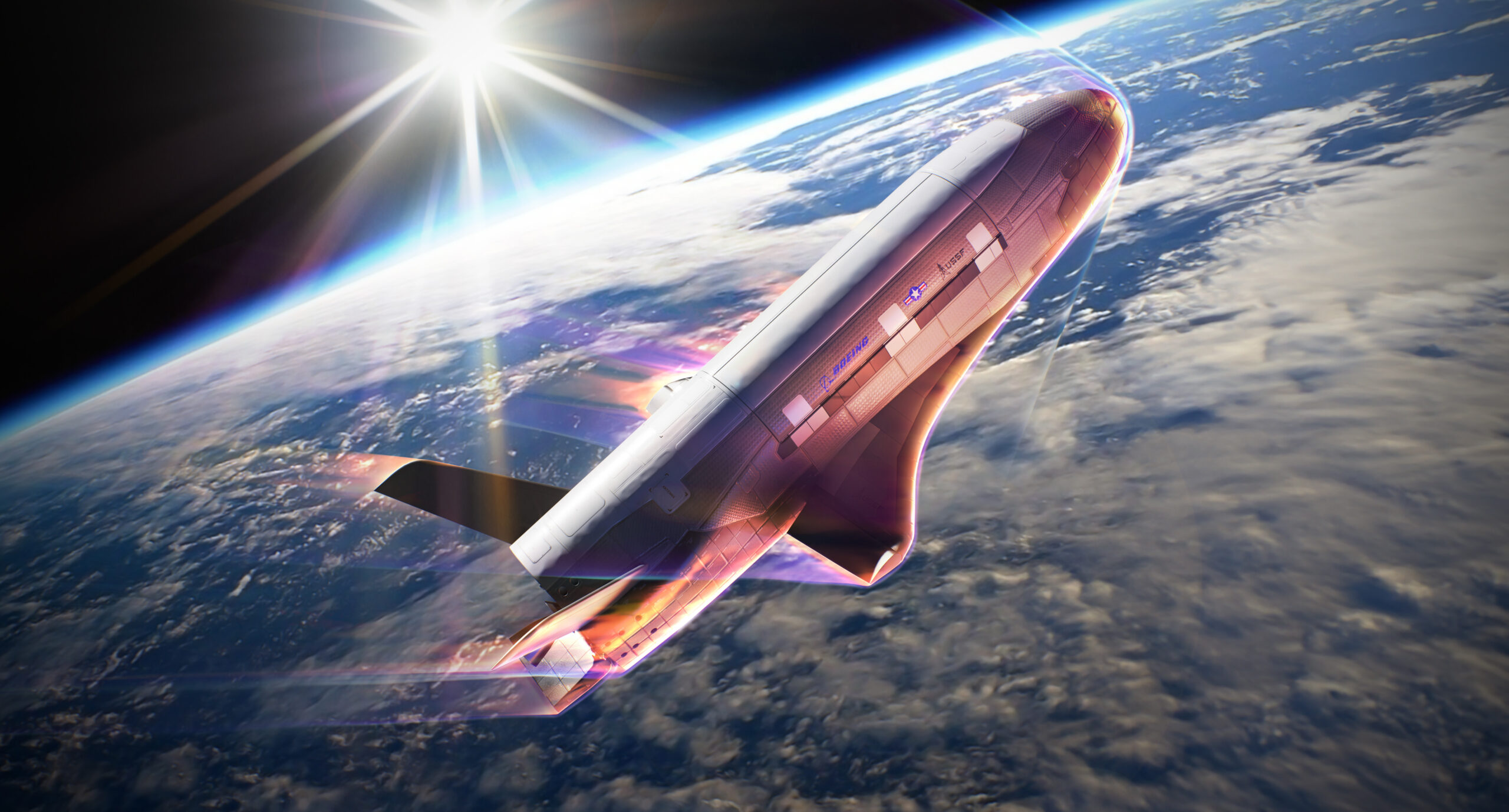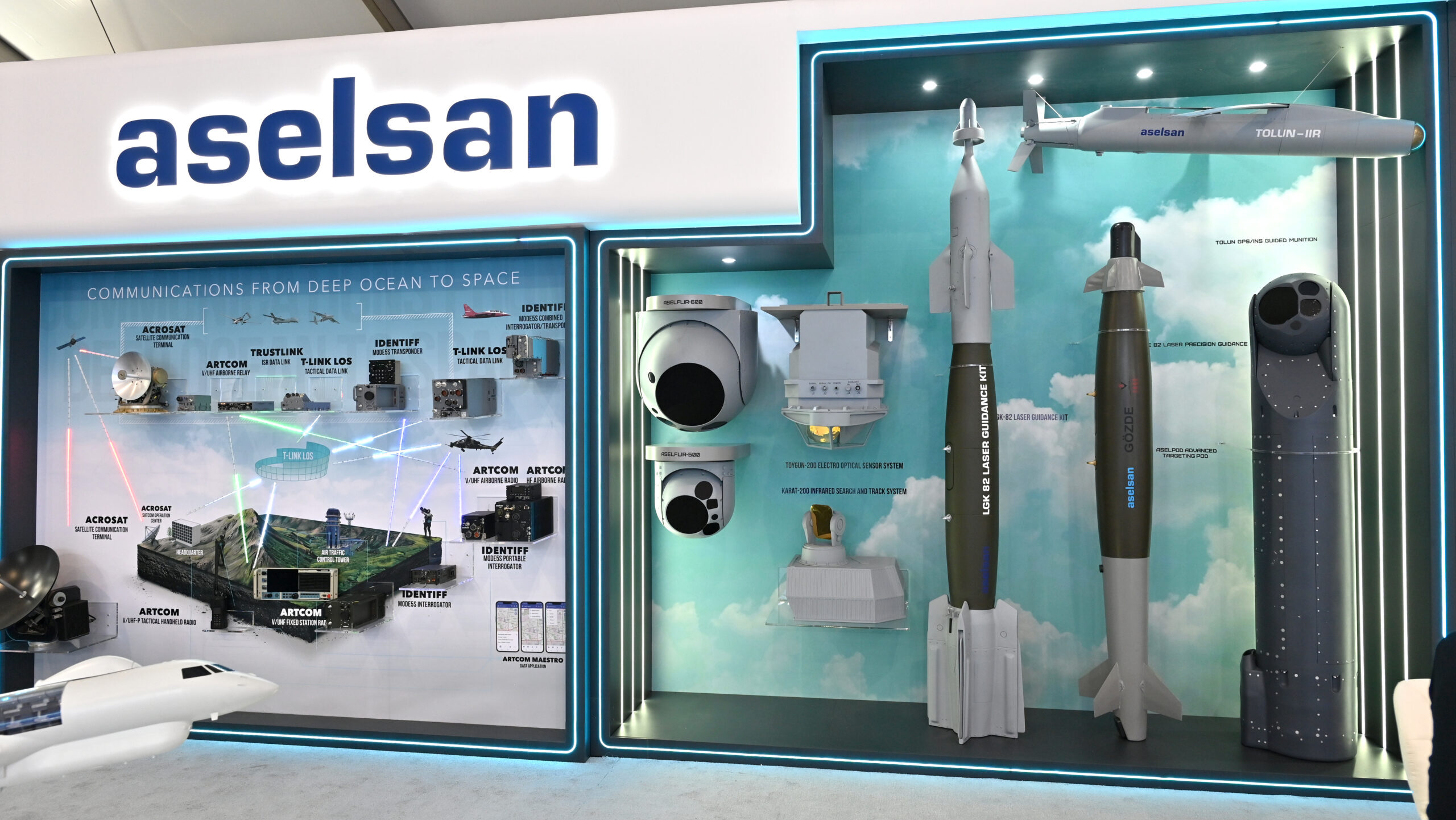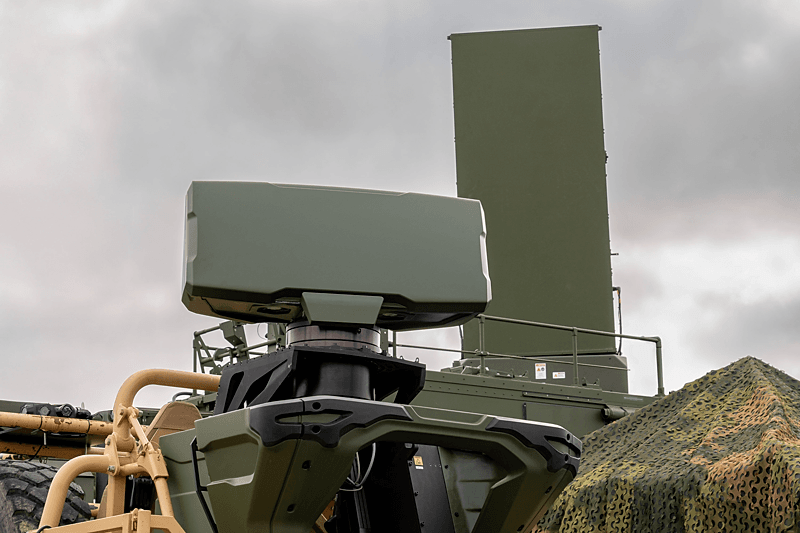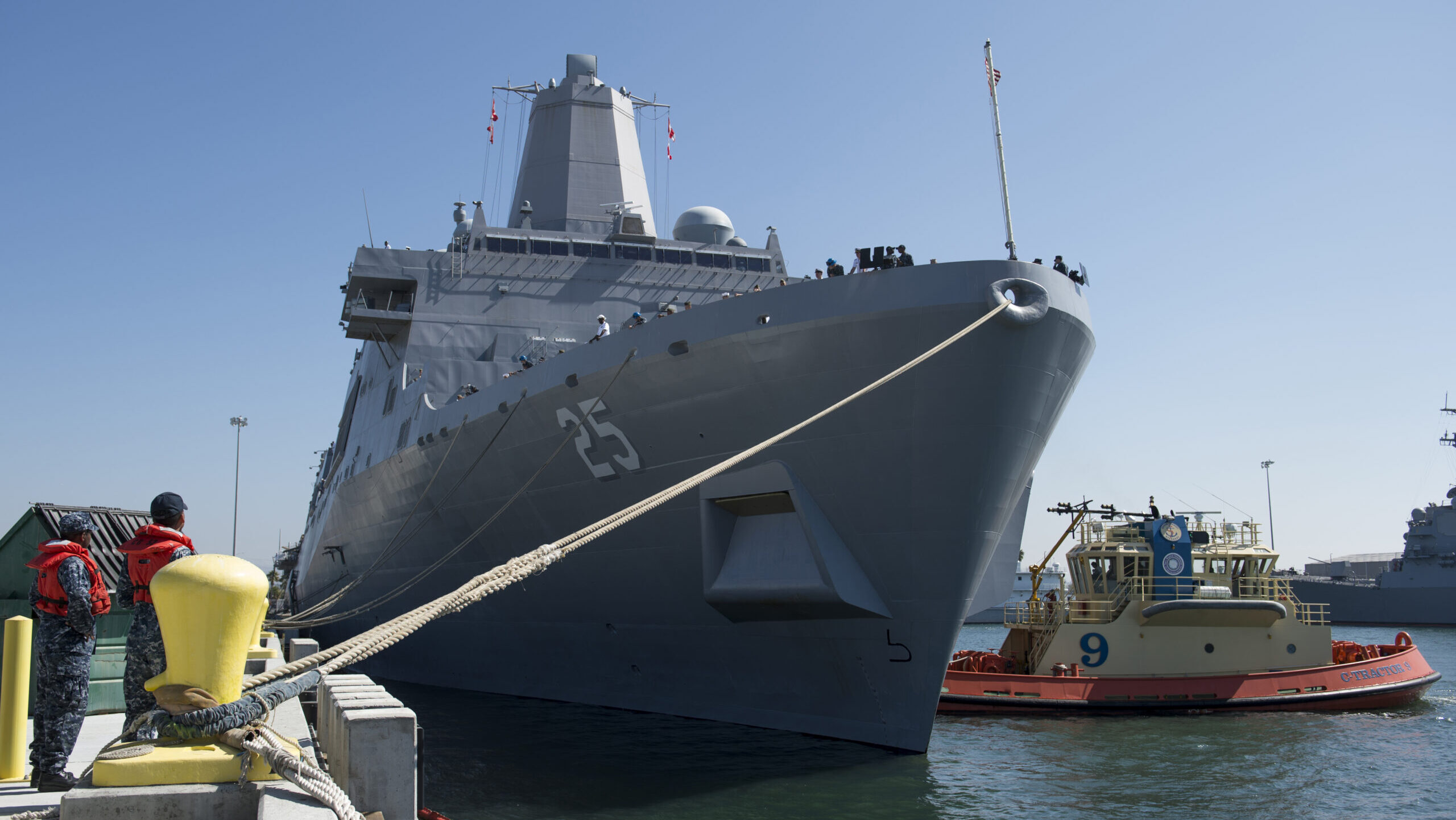
The USS Somerset (LPD-25) last year was tasked with the unusual assignment of deploying ahead of the two other ships in its assigned amphibious ready group (US Navy Photo by Seaman Kelsey Hockenberger/Released)
WASHINGTON — When the 15th Marine Expeditionary Unit (MEU) was preparing for a deployment to the western pacific in the back half of 2023, they received news that the commanding officer later described as “unprecedented.”
The Somerset (LPD-25), one of the three key ships slated to deploy, would get underway two months ahead of the rest of the amphibious ready group (ARG). That Somerset would leave earlier than the other two ships — Boxer (LHD-4) and Harpers Ferry (LSD-49) — was unprecedented because an ARG, the complement of Navy vessels that transports Marines and their gear, is designed to work in conjunction with one another.
“The challenge for us was the employment model changed, but our requirements did not,” said Marine Corps Col. Sean Dynan, who was the 15th MEU’s commanding officer during the deployment. “We were still a crisis response force forward, and we ended up eventually responding to crisis” when called upon. (Dynan relinquished command of the MEU last month.)
It was a rocky start to what ended up being an exceedingly challenging deployment for Dynan and Capt. James Robinson, the commodore of the amphibious squadron deploying alongside the MEU. Starting in January and spanning through most of 2024, the 15th MEU and Amphibious Squadron-5 completed nine major exercises; visited 11 foreign countries; responded to a typhoon that hit the Philippines; and completed 80 operations over the course of 10 months.
The challenges Dynan and Robinson laid out in many ways reflect the bevy of challenges that the Marine Corps has spent recent years combating, from the technological to the operational. From the first time using the Amphibious Combat Vehicle (ACV) to abiding by restrictions and intermittent V-22 Osprey groundings, these issues are detached from the region of the world Marines operate in — and as such, will likely continue to be problems in the year ahead.
Similar to any large formation of military units, every ship in the ARG has its part to play and capabilities that work in tandem with one another. Asking the Somerset to deploy ahead of the rest of the ARG-MEU was challenging because it fundamentally changed how the Navy and Marine Corps had prepared to employ their forces.
“What that required us to do was to build out self-contained staffs aboard each of the ships that could operate independently for an extended period of time,” Dynan explained.
Just days after it initially deployed in April, the Boxer (LHD-4) was forced back to San Diego to fix a variety of maintenance issues. The derailed deployment made headlines due to the ship’s history with maintenance problems.
Robinson said that for most exercises and operations, the ARG was able to substitute in other ships or capabilities to compensate for Boxer’s absence. But he did concede there was at least one “OAI” — an acronym short for “operations, activities and investments” — that was missed due to the ship’s maintenance problems.
The 15th MEU was also the first unit to employ the ACV in real operations. In recent years, the Marine Corps has had a number of mishaps involving their amphibious vehicles, and one of those mishaps occurred during the 15th MEU’s training cycles at Camp Pendleton in California. That mishap, a rollover, killed one Marine and injured more than a dozen others.
Dynan’s MEU deployed with 12 ACVs in tow, and, he said, “it’s almost underwhelming to say that we learned a lot.”
There were challenges in understanding how to maintain the vehicles while deployed and concerns about corrosion prevention. The MEU also had to coordinate sending beach survey teams ahead of the ACVs to check that conditions were safe.
At one point, even the water temperatures were cause for a concern. Dynan recalled that the waters in the Philippines were particularly hot, and there were questions about whether the vehicle’s cooling systems would cope.
“That was somewhat of a surprise,” he added.
The MEU’s training and deployment also coincided with the Pentagon’s three-month-long grounding of the V-22 Osprey fleet, including the Marine Corps’ MV-22 variant.
RELATED: ‘Considerable’ effects: How the Osprey groundings hit one Navy wing
“We were the first unit to re-integrate, train and re-certify Ospreys with the [Marine Air Ground Task Force] just before the Boxer got underway again in June because they missed the two pre-deployment exercises,” Dynan said.
Due to where the MEU was operating, Dynan said the restrictions the Pentagon left in place after the Osprey fleets returned to flight didn’t affect operations. But the missed training time did mean that his flight crews had to work fast to regain qualifications and proficiency once the grounding was lifted in April.
Despite the bumps, the colonel ultimately praised the performance of the thousands of sailors and Marines who took part in the deployment.
“Through resilience and extraordinary efforts by leaders and individual Marines and Sailors and their families, we still executed a very successful non-standard deployment,” Dynan said.


